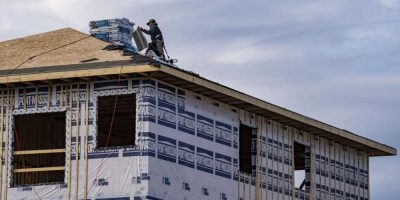
Updated September 25, 2024 @ 4:09pm
Ontario is exploring the idea of digging a massive tunnel under Highway 401 to move traffic and transit across the Toronto area, with Premier Doug Ford pledging to build it regardless of what a feasibility study says.
A beaming Ford had high hopes for his vision as he announced the plan Wednesday.
"It will be one of the world's longest tunnels," he said at a news conference in Toronto alongside Highway 401.
Ford provided no cost estimates or timeline for the project.
"The reason we're having a feasibility study is it's going to determine the length," he said.
"If they're telling me 30 kilometres is x, 40 kilometres is y, and 70 kilometres or 60 kilometres is another cost, let's take a look at it. That will determine the length of this tunnel and that's why we're doing the feasibility study. But we're going to get the job done, mark my words."
Ford said the project could stretch from Mississauga, Ont., in the west to Markham, Ont., in the east.
"It's something that you have to be a visionary," he said. "You have to look at the cost of $11 billion a year it's costing our economy, not to mention how do you put time on people's lives that are stuck in traffic?"
The closest Ford came to providing a cost estimate Wednesday was that he doesn't think the project would cost "hundreds of billions of dollars."
The closest he came to putting a timeline on the project was that it will be in place by the time he's long gone.
"Well after we're gone, well after, you know, when I'm pushing up tulips somewhere, that road is going to be around for 75 years, 100 years, the tunnel," he said. "So just put a tulip for me on there somewhere."
He said the tunnelling would go smoother than Boston’s infamous “big dig” that was beset by delays and massive cost overruns.
That project took 25 years to complete and cost at least $8 billion.
"That's not going to happen here," Ford said. "We're experts at tunnelling."
The premier said Ontario is "growing too fast" and residents need support, in addition to his government's plans to build several highways outside Toronto, including Highway 413 and the Bradford Bypass.
"Drivers in the Toronto area spend 98 hours every year stuck in rush-hour traffic when they'd rather be home with their family, spending time with friends and loved ones," Ford said.
Ford said he would be transparent about the project's cost once the feasibility study lands, which he did not have a timeline for.
But then he refused to say how much Highway 413 would cost, as he has done for several years.
The opposition pounced on the tunnel proposal.
"The premier cannot dig himself out of the mess that he has created in our province, not even with a fantasy tunnel," said NDP Leader Marit Stiles.
"This is a serious issue — gridlock, congestion — but this is not a serious proposal. This is not a serious premier. It is a silly thought from a government that has run out of ideas."
Green Party Leader Mike Schreiner did not mince words.
"The idea that this would ever get built under this (government), let alone be good for traffic at all, is a complete joke," he wrote on social media.
"The premier cares more about building a home for cars than he does about building homes for people."
The tunnel is a "pipe dream" and the money earmarked for it would be better off spent elsewhere, said Ontario Liberal Party Leader Bonnie Crombie.
"This is not a relief to congestion today by any stretch, this money would be better invested in public transit, which could be built far faster," Crombie said.
The Toronto Region Board of Trade applauded the province's plan.
"We need big and bold ideas, and a transit line under the 401 is exactly the kind of visionary thinking governments should pursue," it said. "The Highway 401 tunnel expressway feasibility study marks a pivotal moment in addressing the GTHA’s deepening congestion crisis."
Several organizations in the construction industry also welcomed the news.
"This will boost thousands of construction jobs for LiUNA members and skilled trades workers while building resilient infrastructure to meet the growth, connectivity and, if feasible, provide innovative solutions to our transit infrastructure," said Victoria Mancinelli, a spokeswoman for the Labourers’ International Union of North America, Canada, which represents about 70,000 construction workers in Ontario.
This report by The Canadian Press was first published Sept. 25, 2024.





